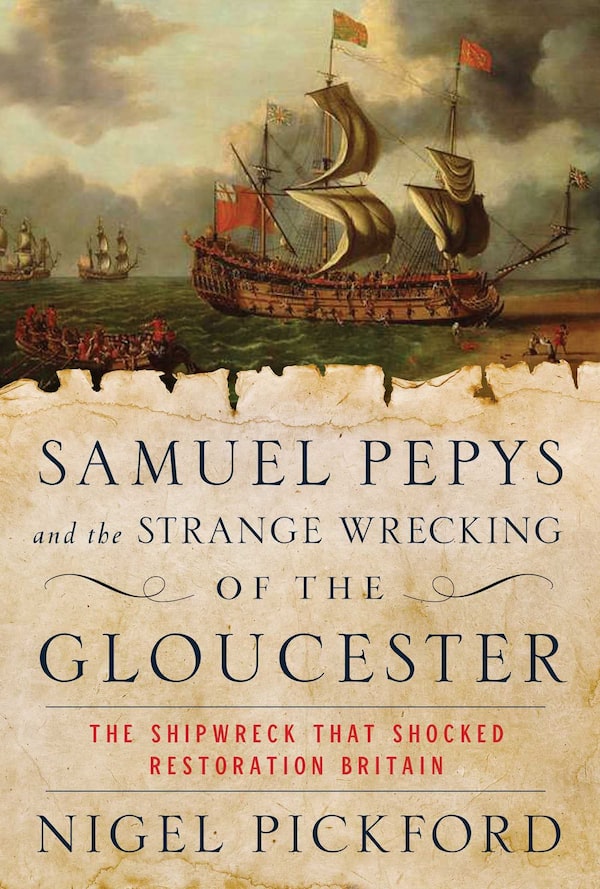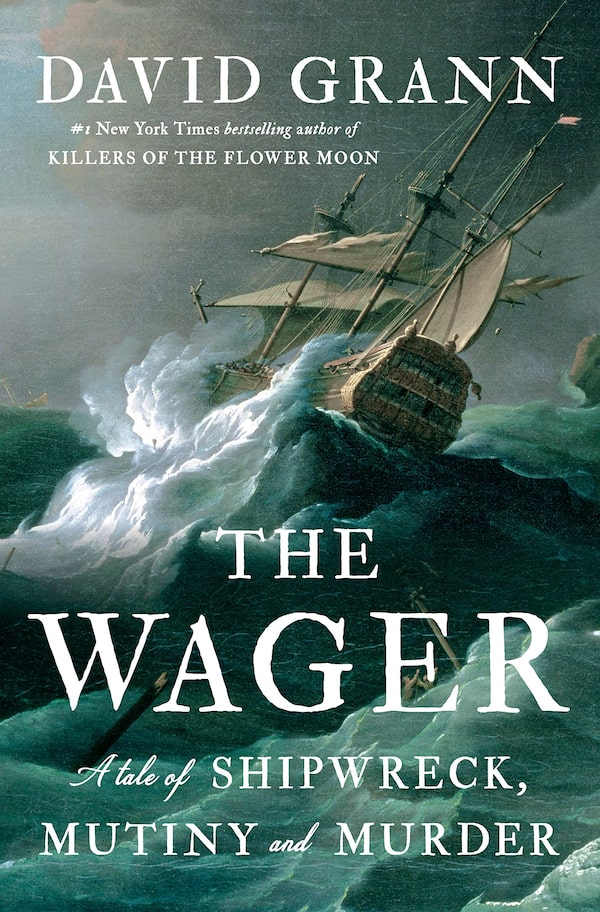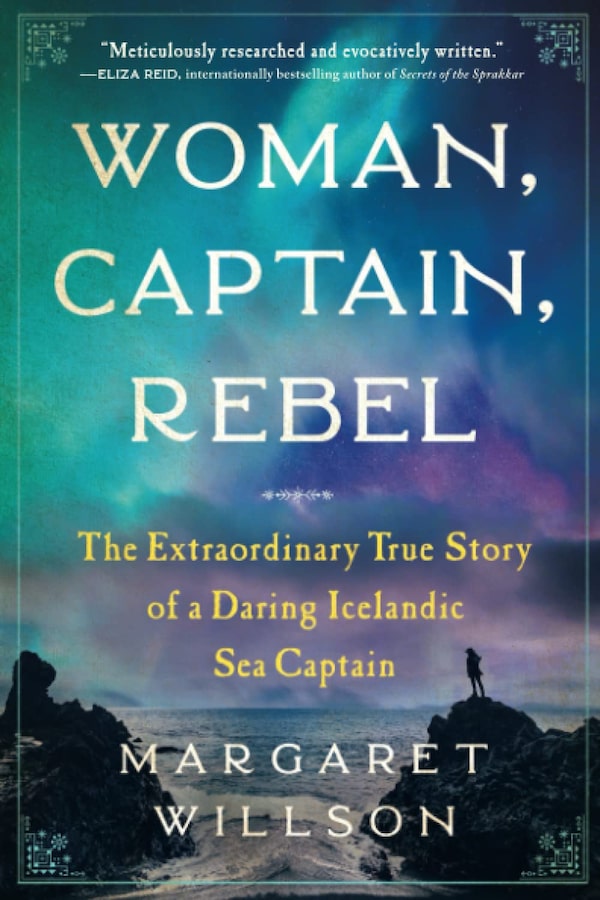In 1682, when the Gloucester sank off the Norfolk Coast while sailing from London to Edinburgh, among its precious cargo was James, Duke of York, heir to his childless brother Charles II’s throne. James, a devout Catholic, had just returned from France, where he’d gone to escape the wave of anti-Papist sentiment gripping the country. James survived the wreck; less lucky were 200 courtiers and sailors. Into the drink, too, was a very valuable silver plate and a criminal amount of undrunk claret.
Diarist and naval administrator Samuel Pepys was, as a member of James’ intimate circle, invited to accompany him on the Gloucester, but instead opted to sail among lesser company on another ship, the Katherine. Later, as rumours about the disaster swirled, some interpreted the status-conscious Pepys’ decision nefariously. Had the sinking been a dastardly plot to kill James, one Pepys knew about and thus eluded? The ship’s captain, James Ayres, a Republican of low social standing, also came under suspicion.

Handout
James’s survival was spun by his supporters as proof of God’s desire for him to be king. A painting was commissioned showing him next to the Gloucester in a small boat, heroically leaning forward, a heavenly beam of light shining down on him. Not everyone bought the narrative. Paintings were also produced showing James meekly cuddling a spaniel while his boatmates yield various weapons.
Author Nigel Pickford, a salvage expert, recounts the sinking in vivid detail and offers possible causes, an obvious one being that the ship wasn’t in, well, ship-shape. (When it was found, in 2007, a painting by the van de Velde brothers, known for their accuracy, would be instrumental in making a positive ID.)
Despite the book’s title, there doesn’t seem to have been anything particularly strange about the sinking per se, other than that two captains in the six-ship royal fleet had missing left hands. The book’s strongest suit is arguably the kaleidoscopic, detailed picture it paints of late-17th-century English society, from palace intrigue to plagiarizing cartographers and slop sellers nestled in London’s crooked streets.
Pickford drops maritime terminology that will be unfamiliar to a layperson, but it’s pleasing to read nonetheless. By book’s end, I convinced myself I’d always known the difference between a puttock shroud, a pintle, and a kersey, and that the best treatment for wormwood is a combination of rosin, oil and sulphur.
When the Gloucester sank, the Dutch were England’s prime enemy. When David Grann’s book begins, about 60 years later, it was Spain, with which it was engaged in a war of empire. Public passions for this had been ignited, or rather manipulated, by the so-called War of Jenkins’ ear, so-called after a merchant captain, Robert Jenkins, claimed (likely apocryphally) that a Spanish officer had cut off his ear in the Caribbean.
The Wager was one of five warships (one of which was also a Gloucester) sent, in 1740, across the Atlantic and around Cape Horn and up the South American Pacific coast. Once here, the plan was to apprehend a certain Spanish galleon brimming with loot. The squadron’s thousand-plus crew, as the latter are wont to be, were a motley mix of the willing and the unwilling. The latter were kidnapped off the streets of London, or from hospital beds, regardless of their age, and press-ganged into service.

Handout
Despite being an unsleek “eyesore,” the Wager was one of the only ships in the squadron to survive Cape Horn. The others were either wrecked, or disappeared. Scurvy, its causes not yet decoded, hit the crew hard: teeth fell out, hair turned to straw, skin blackened. The bodies piled up. Grann’s descriptions are visceral enough to make the ghost army in Pirates of the Caribbean seem not all that far-fetched.
The non-stop dying meant non-stop promotions. One who benefitted from the carnage was a Scot named David Cheap, who became the captain of the Wager midway through the mission. He clung to that long-dreamed-of status like a barnacle, even after the Wager struck breakers off the coast of Patagonia, leaving him and the dregs of his crew stranded on a barren island (now Wager Island).
The castaways cannibalized the remains of the ship, then each other. That they survived was thanks in part to local Indigenous people, who brought them food, but then, unnerved by the foreigners’ strange ways and ridiculous clothes, beat a hasty retreat.
On the island, order broke down; there were mutinies within mutinies. One group fashioned a vessel from the carcass of the Wager and, against Cheap’s wishes, set sail for Brazil.
Amazingly, many of these walking skeletons straggled their way back to England. Fearing court martials that could get them hung for abandoning their captain, a few tried to pre-emptively control the narrative by publishing their version of what transpired on the island.
From its first to its last page, The Wager never stops being jaw-dropping. Even a sidebar account – of how a ship in the squadron, the Centurion, made it to the Philippines and somehow sank a Spanish galleon – reads better than any thriller. It’s a book about the limits of human endurance but also about the power of Britain’s class system and naval codes, which held sway – almost – even on a deserted island thousands of miles away.
Woman, Captain, Rebel moves us up another 30 years or so, to 1777, when one of the only known female sea captains of the era, Thurídur of Iceland, is born. Cultural anthropologist Margaret Willson stumbled upon Thurídur’s story on a trip to Iceland, but it took her 20 years, and a team of researchers and scholars transcribing 19th century Icelandic texts, to turn it into this book. (It turns out Thurídur’s story is fairly obscure in her native country as well.)

Handout
The result is a book that appropriately reads like a saga or fairy tale; a sense amplified by a recurring character named Mori, the ghost of a child who died of cold and hunger after being refused refuge by a farmer during a famine (ghosts are, apparently, a very real thing in Iceland) and who continued to haunt the area where Thurídur lived for generations.
Thurídur’s isn’t your typical story about a woman making it in a man’s world by having to be better than the latter, though the trouser-wearing fisherwoman was better than men by an undeniable metric: her daily catch. Thurídur’s obvious talents put her in demand from an early age, first as a deckhand, later as the captain of various multi-oared open vessels. She seems to have been mostly accepted, especially by her crews, who appreciated her extreme competence and ability to dodge perilous situations: she worked into her 70s, but never lost a crew member or boat.
Like most seafarers at the time, Thurídur worked on farms in the off-season, and it’s on land, ironically, where Tillson’s book gets its sea legs. We learn the granular details of Thurídur’s life: her upbringing, marriage, divorce, her solving of a notorious robbery, and her soap-operatic feuds with various locals, including the wealthy deputy aptly named John Rich (a pleasing foil for The Wager’s David Cheap), a conflict that led, for a time, to her exile from the community.
In her later years, Thurídur grew litigious, on behalf of herself and other women. She ruled courtrooms as ably as she ruled the seas. But neither activity brought her wealth in the end. It seems the one thing Captain Thurídur failed at was securing a pension. She died a pauper in 1863, age 87.